Exploring Sparwood, the Elkford coal fields, and Fernie
I had initially planned on only spending one night at Sparwood, but soon realized that there’s a lot to see in the area. First thing in the morning of Day 28 of our RV trip – Wednesday, May 23rd – I added another night to our Mountain Shadows Campground stay.
Much of what people see when researching Sparwood easily leads to the thought that once you see “The Big Truck”, you might as well move on. But I’d seen enough on my wanders 2 years before to know that wasn’t true.
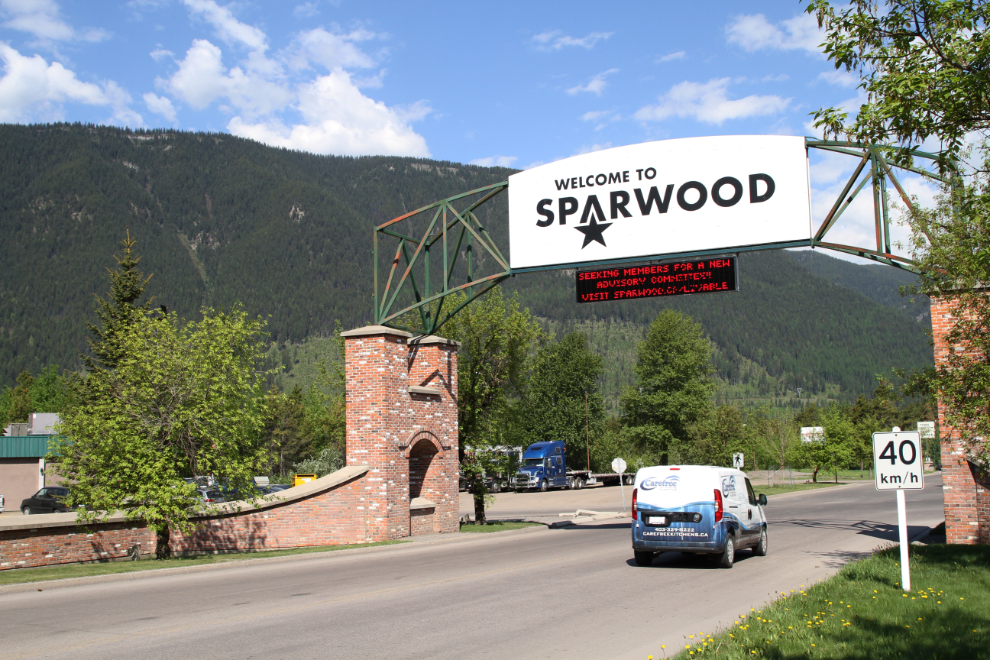
Like most people, I began my Sparwood visit at The World’s Biggest Mining Truck, located beside the visitor centre. The truck is a Terex 33-19 “Titan”, and pretty much every number on the specification sheet is very impressive. It is, however, not actually the biggest mining truck in the world – that title was taken away by the Belaz 75710. The Titan, though, is 65 feet 11 inches long, 24 feet 10 inches wide, and 22 feet 7 inches high with the dump box lowered. Empty, it weighs 520,400 pounds, and it can carry 700,000 pounds of rock or coal at up to 30 mph. It’s diesel engine produces 3,300 horsepower and burns 70 gallons of fuel per hour, and the rear wheels are driven by 4 electric motors that consume enough electricity to power 3,200 homes.
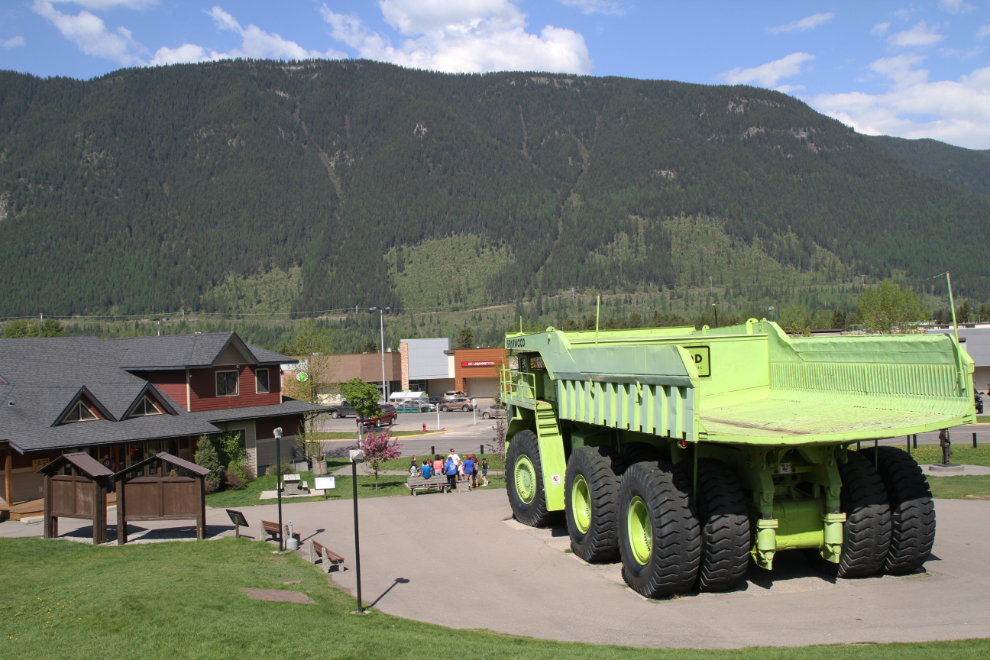
I climbed up to the highway to shoot the photo above, but the Titan is most impressive when you’re standing beside it. Actually, I’m willing to bet that it was even more impressive from the driver’s seat! 🙂
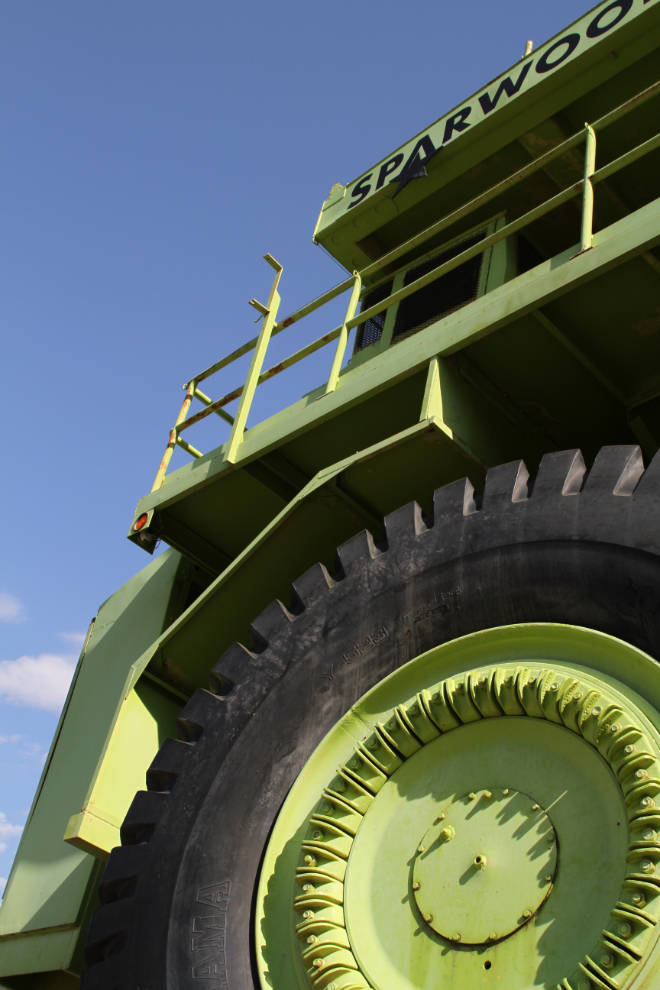
The Big Truck is fun, but beside it is another side of mining – the Miners Memorial, which is “dedicated to those who have lost their lives mining coal.” It currently lists the names of 181 miners killed in the coal fields of the upper Elk River valley between 1901 and 2014.
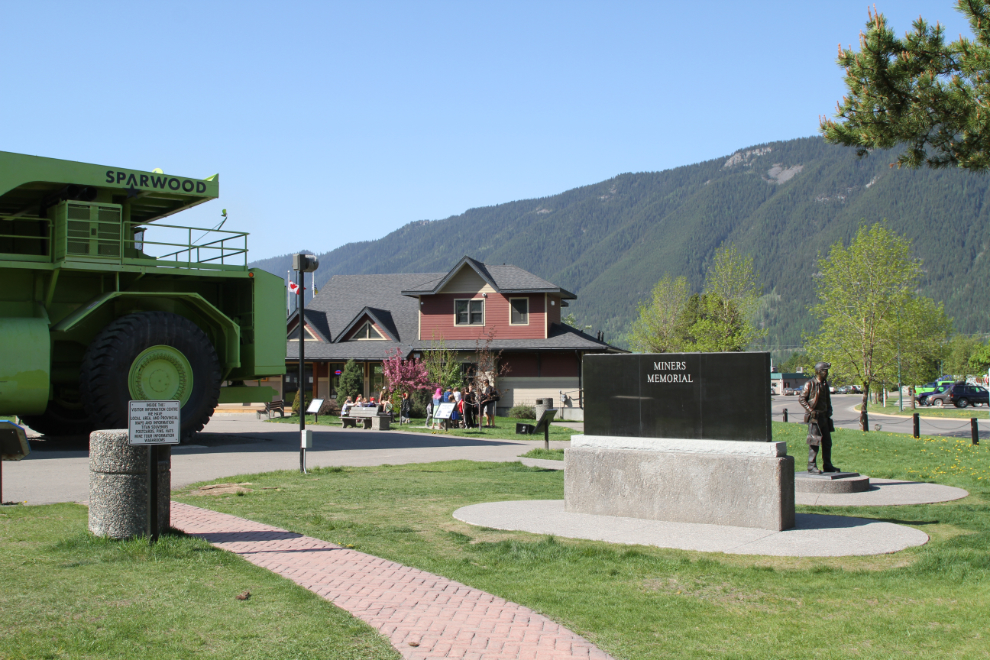
Some particularly tragic dates stand out on the list of names memorialized on the black granite:
January 8, 1904 – 7 men killed
August 8, 1916 – 12 men killed
April 3, 1967 – 15 men killed
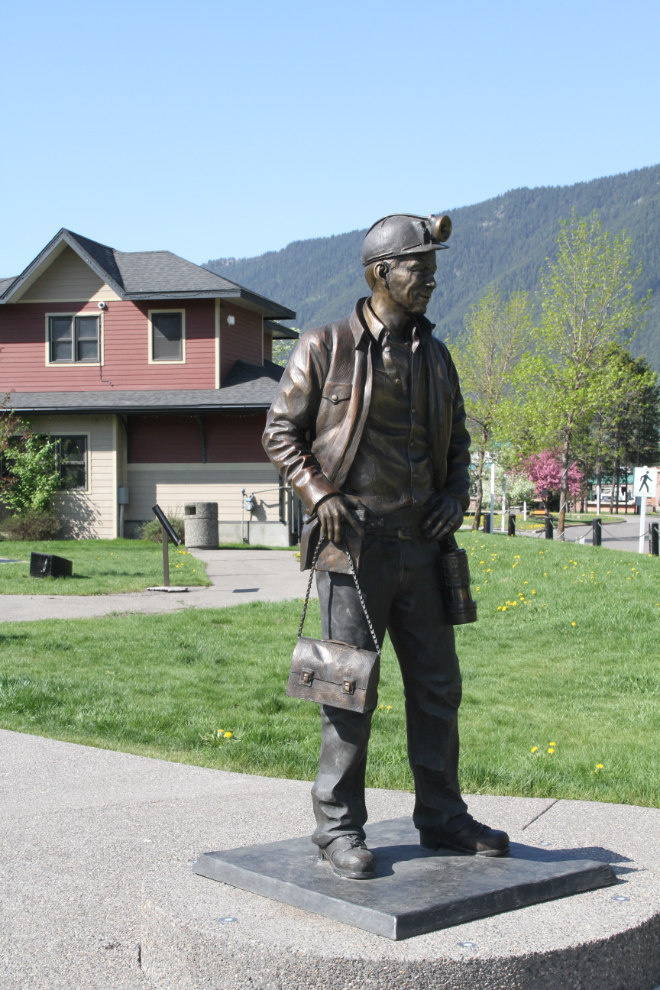
The next thing on my list was the Mining Equipment Walk. There are pieces of mining equipment with interpretive panels located all over downtown Sparwood. I asked at the visitor centre if there was a guide to them, and was told that they’re working on it. They’re not working very hard – the displays were set up quite a few years ago judging by the condition of the panels, and I could create a map of them in about 15 minutes, and a brochure in a couple of hours. For anyone with an intererst in mining, though, it’s worth a wander to find some of them – the displays and interpretation were very well done.
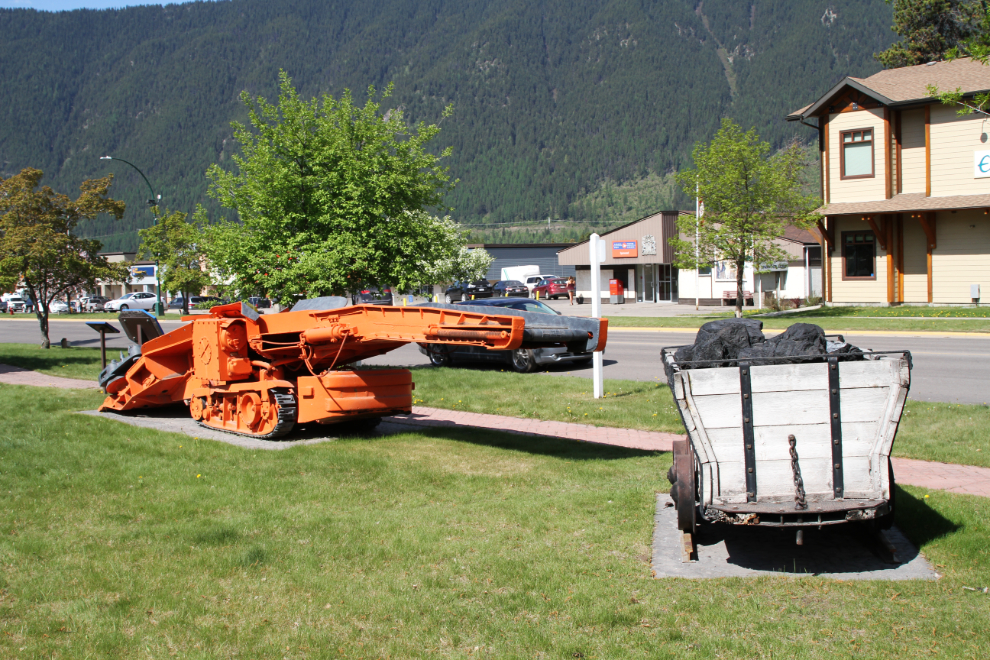
While looking for mining equipment, I discovered that there are also a fair number of murals around town, some very large, some in rather obscure locations. Most of the murals, though not all, relate to the community’s mining heritage.
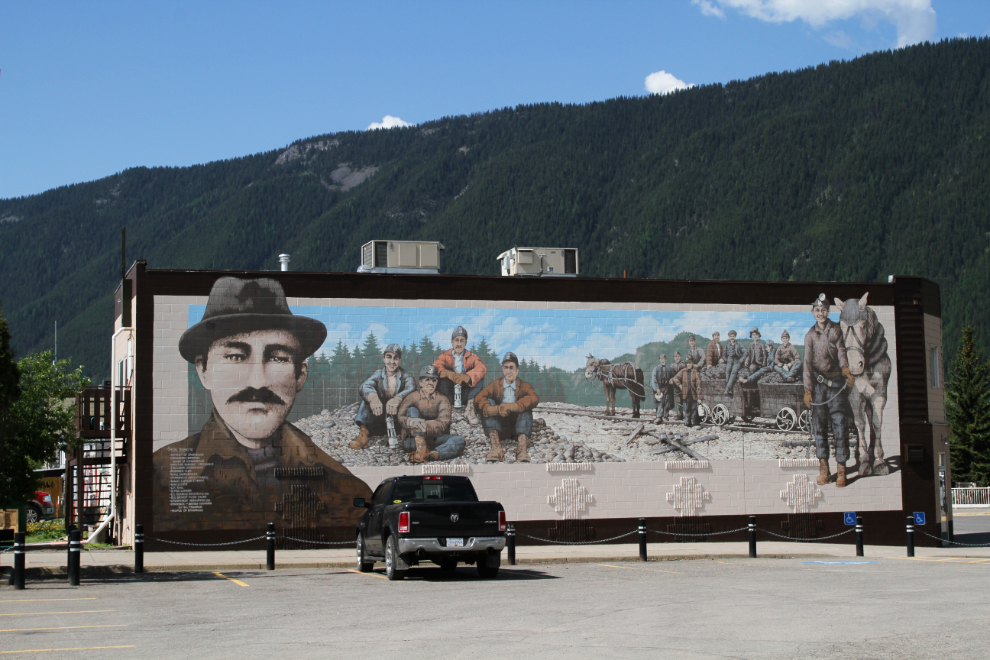
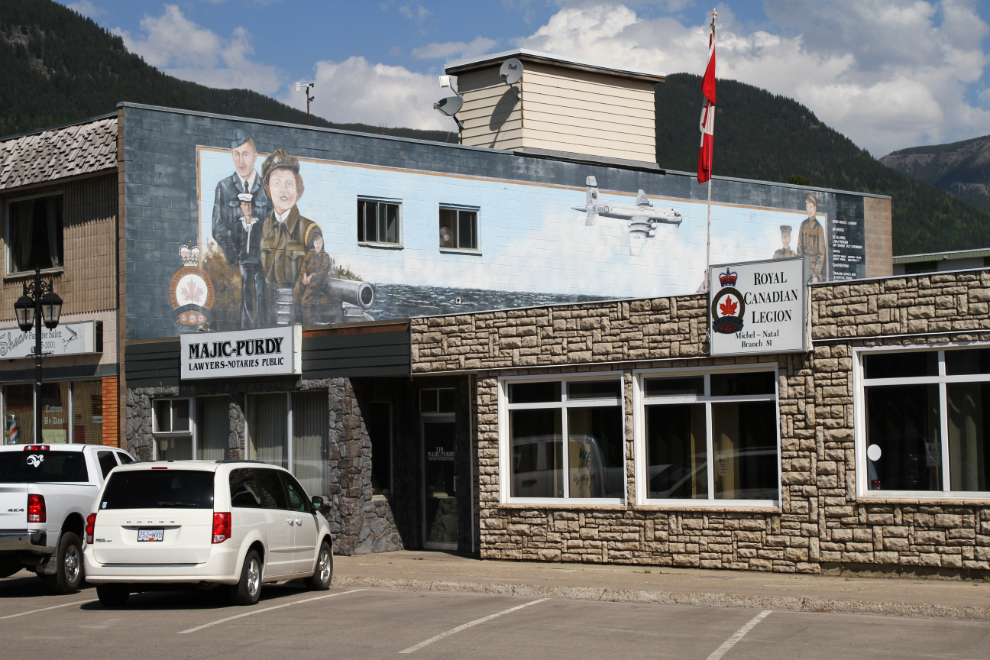
I also found a mining park located downtown. It’s quite elaborate, mostly concrete, and partly below ground level. There’s a large fountain, but the water hadn’t been turned on for the season yet (I assume). With the fountain flowing and some people around, it seems that it could be quite a vibrant place.

Leaving Sparwood. Well, leaving downtown Sparwood, and heading for the walking trails that are accessed at the campground. There’s a large network of trails around town, and main one that runs by the campground is part of the Trans Canada Trail.
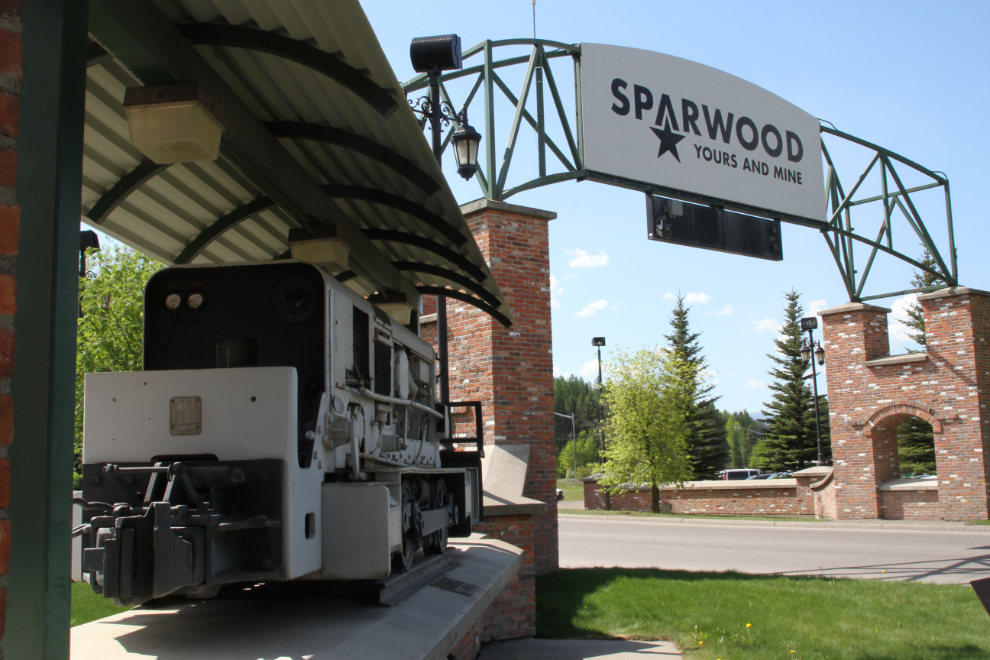
I had gone into town by myself, but picked up Bella and Tucker for the trail walk, of course. I picked the east-bound Elk Valley Coal Discovery Trail, the one that’s part of the Trans Canada Trail.
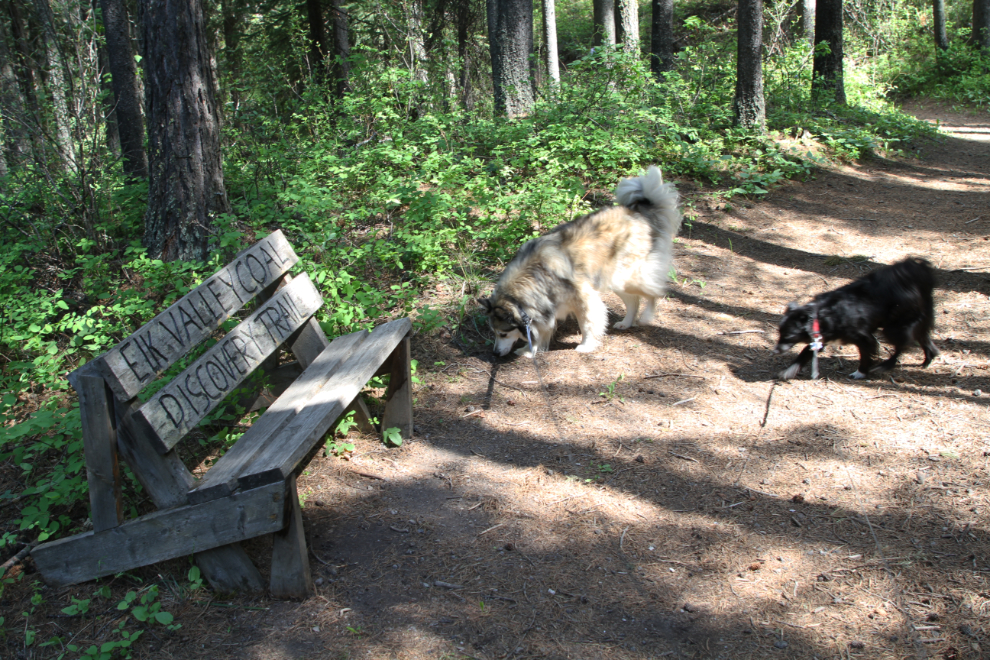
The trails provide very pleasant walking through the mixed forest. There are a couple of places where the trail splits for some reason, but they soon join up again.
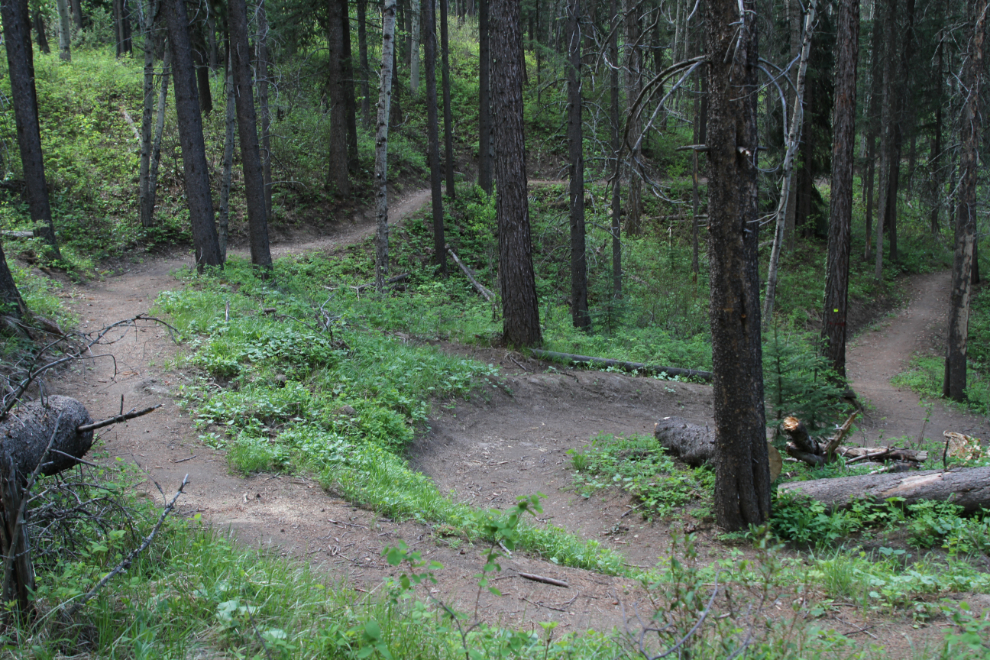
The east-bound trail goes along the boundary of the Sparwood Golf Course. There are a few signs warning about a high-voltage fence between the trail and the greens, but the fence has obviously not been powered in quite a few years. It looks like a nice golf course – I only saw a couple of men making their rounds with golf carts.
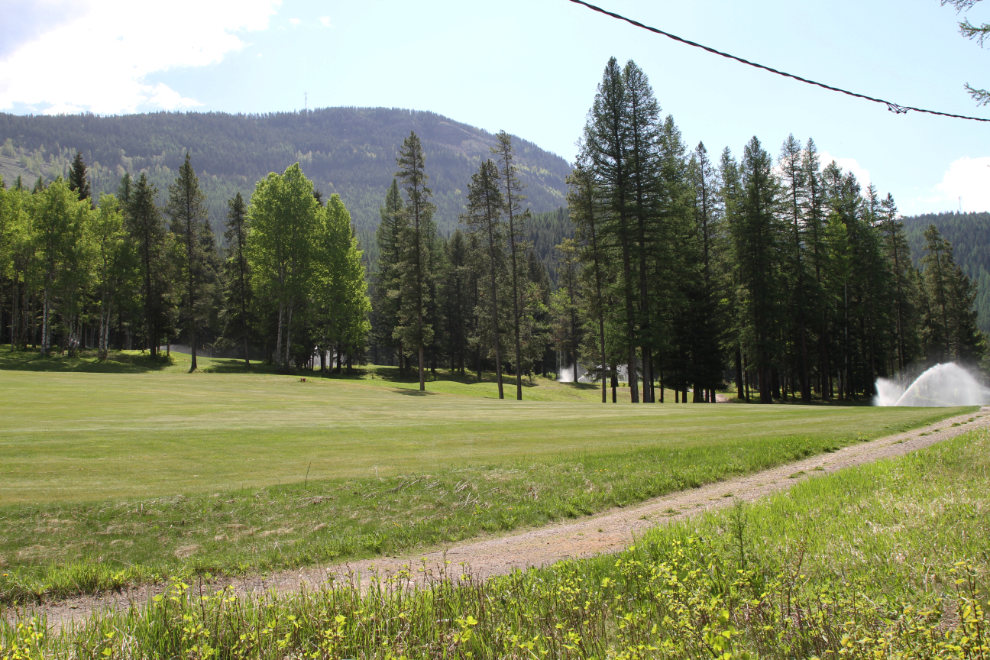
The trail – or at least the forested trail – ends at the golf course access road. As you can see in the next photo, all roads in Sparwood lead to The Big Truck 🙂
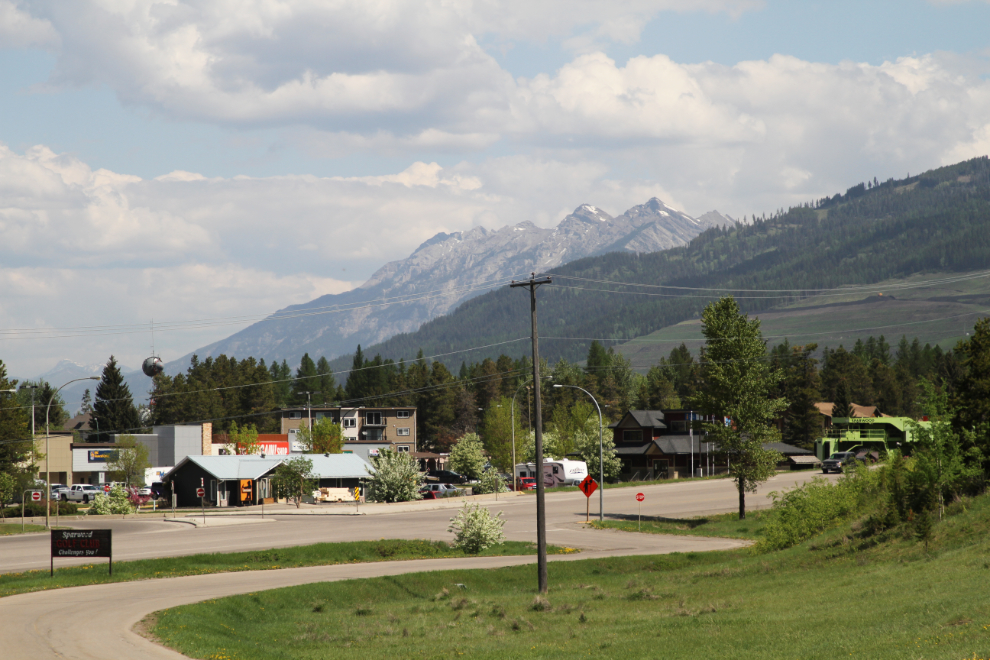
Getting back to the campground and picking up Cathy, we headed to another coal mining town, Elkford, located about 50 km north up the Elk River valley. A loop around town didn’t provide any inspiration, so we headed up into the coal fields. A viewpoint provided this look back at the town and its ski hill.
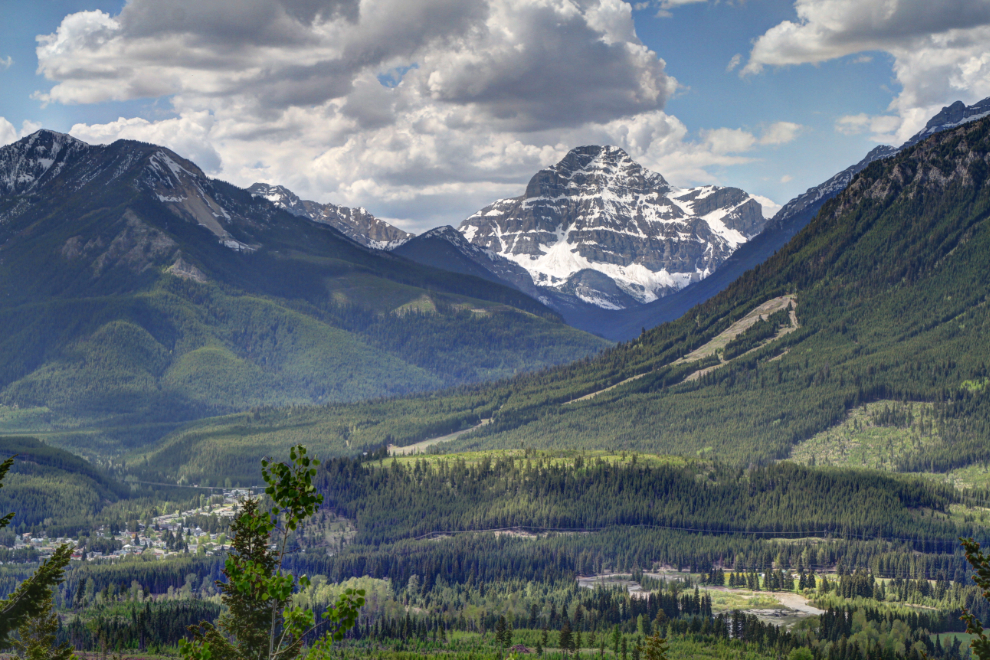
I’d love to see the coal mining area from the air, but a couple of queries in Sparwood provided no information about any company offering that. It’s clear that these coal fields make the Klondike gold fields look like a child’s sand box, though. In the next photo, the upper part of a mountain has been removed (one of many summits removed). In the foreground, a logging clearcut.

This was the largest coal mine we saw, though I didn’t get a photo of the roadside/railside part of the operation, as it’s an industrial road and not tourist-browsing friendly.
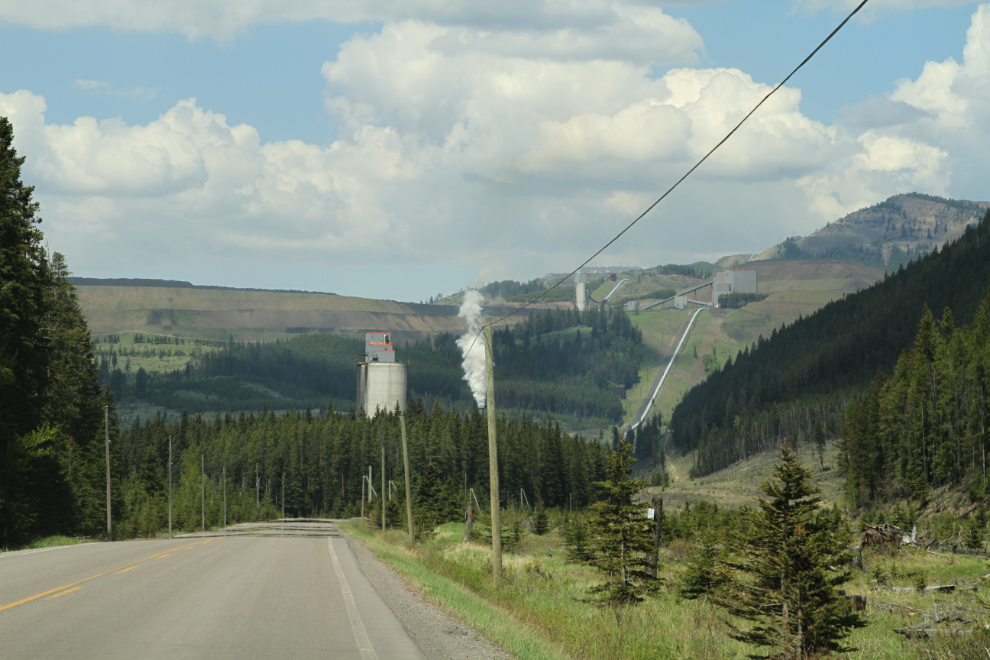
The main road goes on for at least 60 km and the back roads for hundreds of km. We quit at this railroad crossing, though, and started back towards Highway 3.
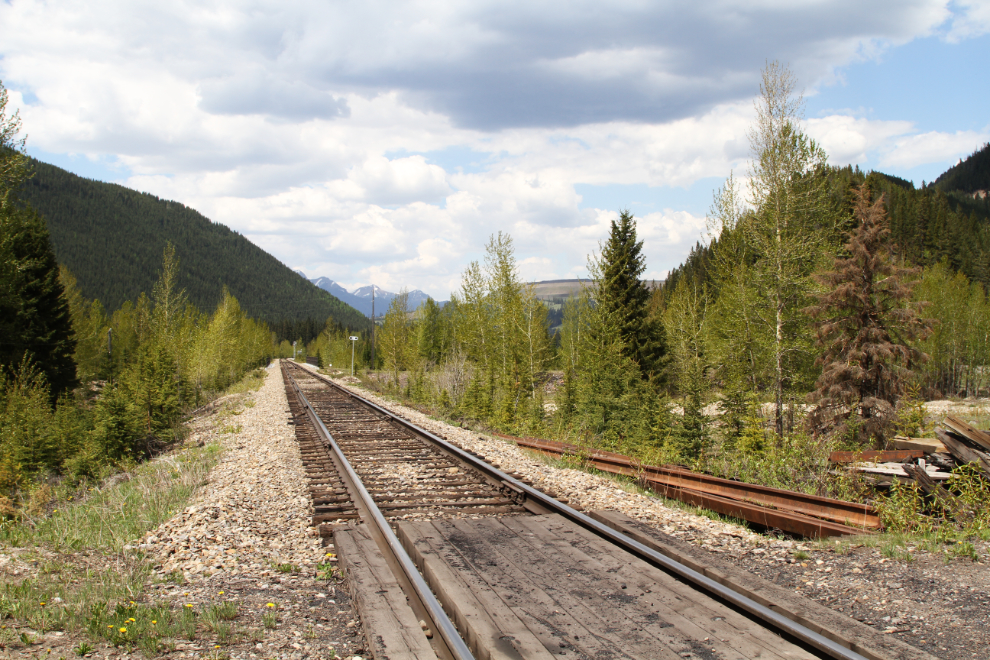
Back at the highway just after 3:30, we decided to backtrack west and see the historic downtown of Fernie. Once in Fernie, a stop at one of the leash-free parks seemed like a good idea, but it was so warm that neither Tucker nor Bella wanted to play.
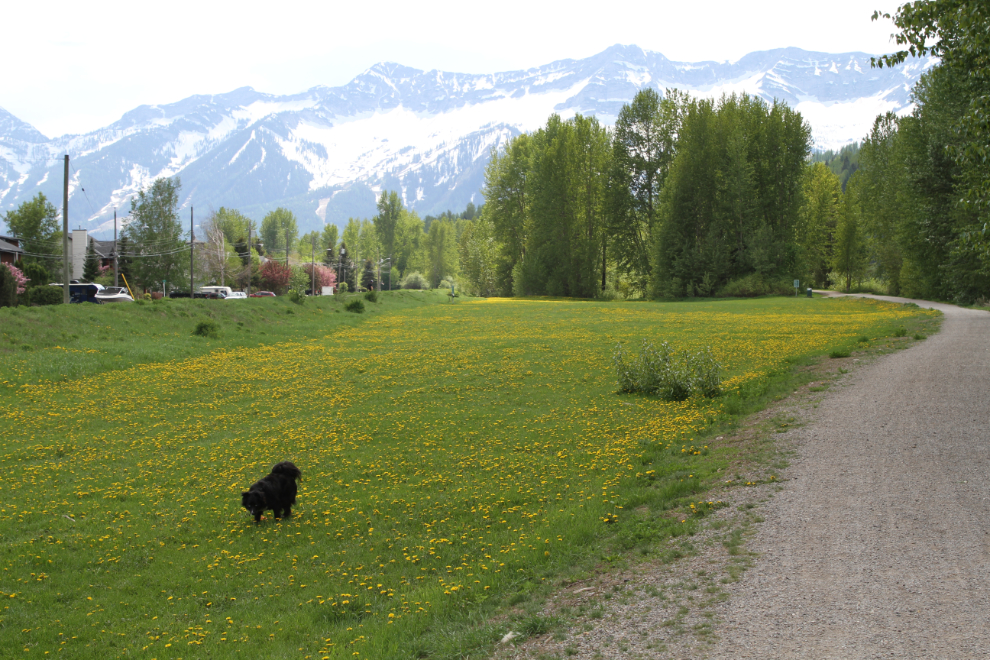
We looped around the downtown a couple of times, but it was too warm to leave the dogs in the car, and walking 2 dogs on a downtown sidewalk is not my idea of a good time. I found a shady spot of a back street and got a few photos that will encourage me to get back for a proper visit.
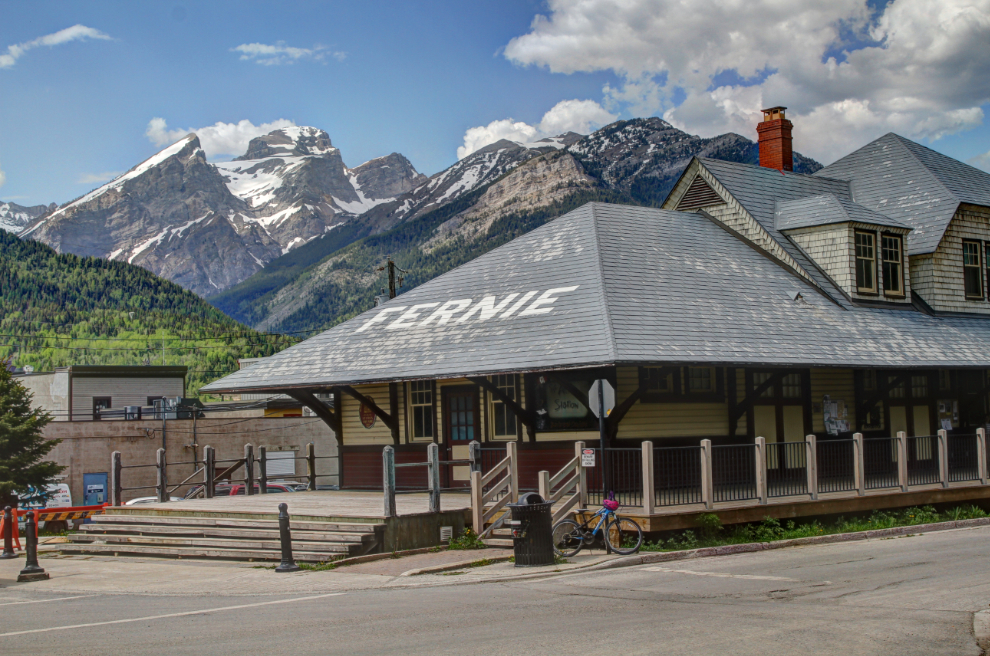
From what I saw of the historic downtown on this short visit, I’m amazed that I’ve never made the short detour off the highway before. There are plenty of historic buildings, and several of the coffee shops and cafes have “street patios,” a couple of which wold have been perfect on this gorgeous day.
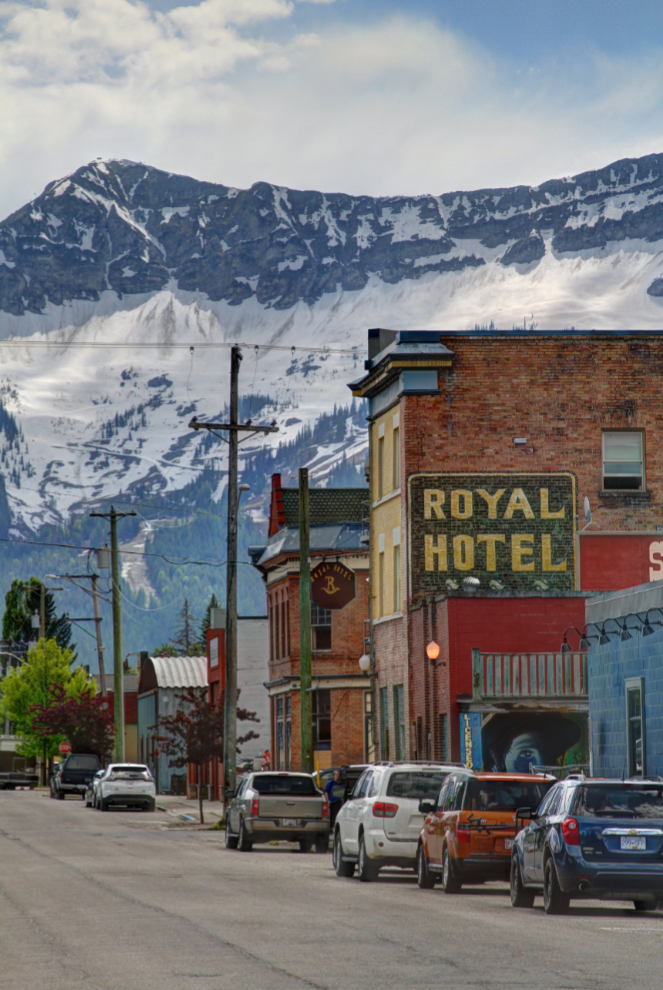
Now happy that I had a much better idea of what the Sparwood area has to offer, we’d head into the Crowsnest Pass, one of my priorities for this trip, the next day.
